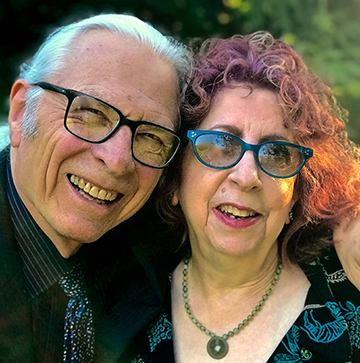THE UNFETTERED CRITIC – By Paula Block Erdmann & Terry Erdmann
This bud of love by Summer’s ripening breath May prove a beauteous flower.
Remember?
 It seemed like a silly, senseless assignment. The teacher said, “Read Shakespeare’s Romeo and Juliet.” What a pain. We didn’t have time to read an old, play—we were teenagers, busy with more important things. Like hanging out. And the adolescent throes of young love. Many of us quickly glanced through Cliff’s Notes rather than read the actual play—and never noticed what it was about: Teenagers. Hanging out. And the adolescent throes of young love.
It seemed like a silly, senseless assignment. The teacher said, “Read Shakespeare’s Romeo and Juliet.” What a pain. We didn’t have time to read an old, play—we were teenagers, busy with more important things. Like hanging out. And the adolescent throes of young love. Many of us quickly glanced through Cliff’s Notes rather than read the actual play—and never noticed what it was about: Teenagers. Hanging out. And the adolescent throes of young love.
Therein lies a lesson—it wasn’t a silly assignment after all; it was… (Who’da thunk it!)… pertinent. Those among us who did read the dreaded play found that this, along with Shakespeare’s other works, is such stuff as dreams are made on—and careers too. Today, right here in the Rogue Valley, Shakespeare’s words form the foundation of an industry, an economy, a way of life. Had we paid attention, each of us coulda been a contender. As Romeo so astutely states, “O, I am fortune’s fool.”
Ah, but it’s not too late to hang out with the world’s most famous young lovers. Thanks to the world-class artists at Ashland’s Oregon Shakespeare Festival, Romeo, Juliet and the whole gang of four-hundred-year-old teenagers currently are staging their stuff at the Angus Bowmer Theatre. And the good news is, because Shakespeare wrote the play to be performed and watched, you still won’t have to read it.
One reason so few of us read Shakespeare when assigned was that darned antiquated language. It doesn’t matter that those words were contemporary when the Bard put them down, they’re antiquated now. So it won’t hurt to do a little prep work. Yes, homework! Get over it. All you need is a DVD player and a couple of disks.
Step one: Learn the story and you’ll understand the language. When you know the story, your brain will translate “doth” into “does” and “hath” into “has.” Which is why you should watch the 1961 movie West Side Story. Sure, Natalie Wood plays a girl named Maria and Richard Beymer a boy named Tony, but they’re actually Romeo and Juliet. Directors Jerome Robbins and Robert Wise simply updated the language and changed Shakespeare’s feuding families from Verona into two warring New York City gangs. By adding the now classic songs—“Maria,” “I Feel Pretty,” “Somewhere (There’s a Place For Us)” etc.—they created one of the greatest Broadway musicals of all time. Yet the tale stayed the same—and West Side Story won ten Academy Awards, including Best Picture.
Step two: Watch the movie most loyal to Shakespeare’s original play, and one of the most visually beautiful films ever made—the Franco Zeffirelli directed l968 production titled, loyally, Romeo and Juliet. Now that you know the tale of the boy and girl from battling families who meet and fall in love, the language no longer will be a problem. Really. You’ll simply relax under the spell of the most beautiful English poetry ever committed to pen, stage and screen. When the then-fifteen year old Olivia Hussey calls for Leonard Whiting’s Romeo from her balcony, you’ll identify with her desire. The film received four Academy nominations, including Best Picture, and won two awards.
Which brings us to step three. The production being performed in Ashland offers a differently up-dated version of Will’s star-crossed story; Director Laird Williamson has set the play in Alta California in the l840s, just as the then-Mexican state is annexed by the new United States of America. Yup, it takes place right down the road, across the Siskiyous, shortly before our own town was founded.
Romeo and Juliet at the Oregon Shakespeare Festival runs through November 4. Plenty of time for all of us to bone up before driving over. What better things do we have to keep us from it this time?
Paula and Terry Each have long impressive-sounding resumes implying that they are battle-scarred veterans of life within the Hollywood studios. They’re now happily relaxed into Jacksonville.
 Paula and Terry identify as writers, with an ever-increasing number of published works to support the supposition. They live a primarily pastoral life in the enchanted town of Jacksonville.
Paula and Terry identify as writers, with an ever-increasing number of published works to support the supposition. They live a primarily pastoral life in the enchanted town of Jacksonville.